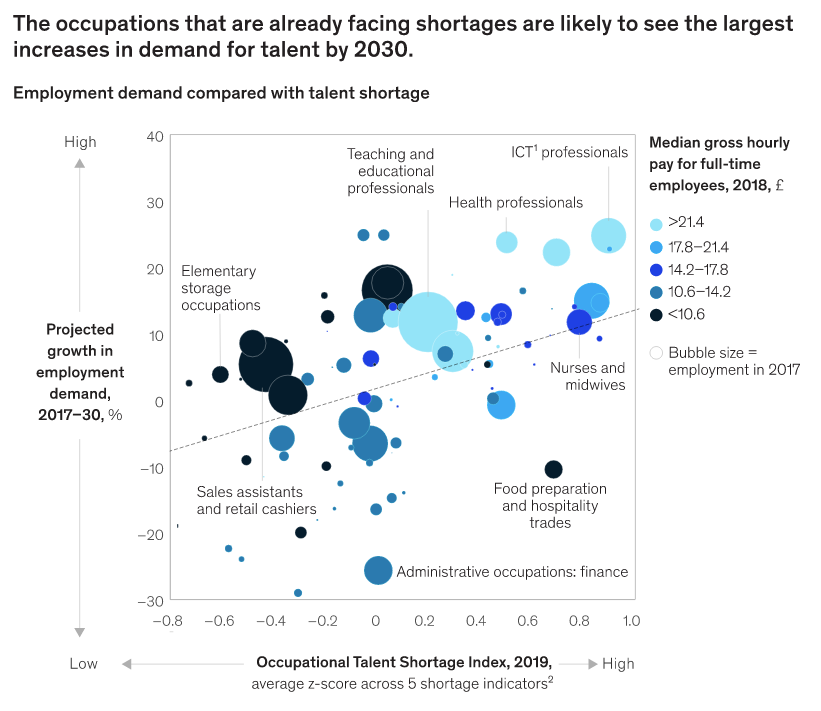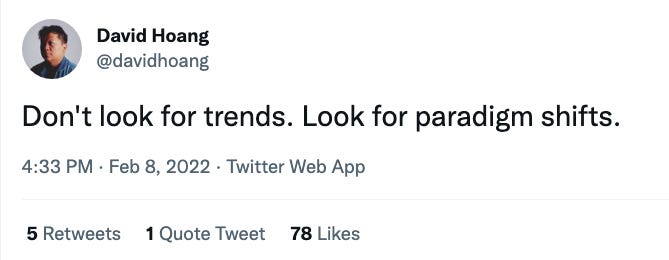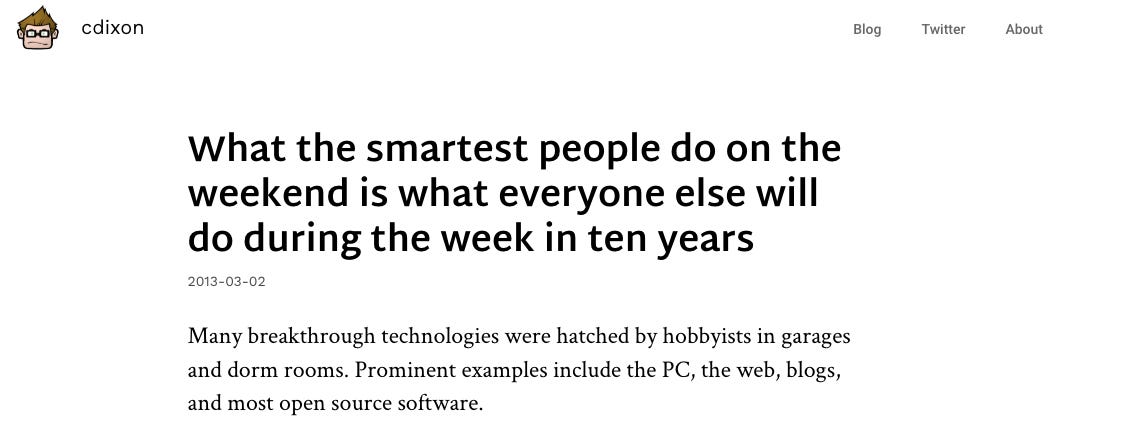#1: Your next job might not exist yet
Cohortly is on a mission to unlock opportunities by helping people navigate and accelerate their careers in tech.
We believe the best way to learn is by doing, together. We’re building a career community which brings together mentors, coaches and cohort based courses. Whether you're looking to develop skills related to growth marketing or growth mindsets, you'll have a team ready to challenge and support you.
Join our waitlist here.
Your next job might not exist yet
I read a stat over the weekend that blew my mind:
65% of children entering primary school today will work in job types that don’t yet exist.
That’s a phenomenal amount, and also a somewhat more optimistic antidote to the “AI will take all our jobs” narrative (although that is somewhat true and should be considered also). In a world where technology changes exponentially, it can be daunting but also exciting to imagine how our career prospects can change with it. For example, crypto was only invented in 2009 and while still very much in its infancy, it can be found mentioned in over 32,000 job adverts on Linkedin today.
So in a world where everything is changes quickly, how can you predict where future jobs might evolve?
There are a few ways to potentially do this:
1.Identify upcoming skills shortages
This report from McKinsey shows that the largest talent shortages in 2030 will exist in roles that can’t easily be automated e.g. healthcare where part of the service requires human judgement and care, and industries that will be doing the automating e.g. tech. Upskilling into these industries can help future prove your career.
2. Identify paradigm shifts
The shift from desktop to mobile created new roles (e.g iOS engineer) and new industries segments (it’s unlikely social selling would’ve taken off on desktop). Looking for headwinds that are shaping long term policy (e.g Climate-tech responding to legislation), new technologies (e.g. blockchain adoption leading to products being built for Web3) or significant demographic changes (e.g. ageing population who will have a whole range of needs) can uncover future job opportunities.
3. Identify tech hobbies
This article written by Chris Dixon, partner at Andreessen Horowitz, in 2013 has stood the test of time remarkably well. He predicted that “present-day hobbies [such the internet of things, 3D printing and others] will seed future industries”. If you want to identify potential new roles and industries, look at what the engineering folk in your life are building for fun.
As market requirements change quickly, the best way to prepare for future job positions is to focus on skills not roles.
The OCED identified three skill areas that will be in high demand by 2030 (and arguably already are):
Cognitive and meta-cognitive skills, which include critical thinking, creative thinking, learning-to-learn and self-regulation
Social and emotional skills, which include empathy, self-efficacy, responsibility and collaboration
Practical and physical skills, which include using new information and communication technology devices
Luckily, these are the exact skills we’re developing courses for at Cohortly 😉 .
In the news
A Secret Weapon In The War For Talent Career Development: Stalled career development is a key reason people quit their jobs, according to recent research (no surprises there am I right!?). This article shares tips on how companies should think about career development to help retain talent.
Pursuit closes 10m fund to spin up a self sustaining job training program: The US based company operates a learn-to-earn model, enrolling low income people and up-skilling them into tech roles, taking a percentage of their income when hired. While somewhat controversial, Pursuit has seen its successful participants annual salaries from an average $12,500 to $85,000 after 4 years.
How to hire for diversity — from early to late stage: Multiple studies have proved that diverse teams are higher-performing teams, however, tech companies often struggle to recruit a diverse talent pool. This article provides a guide on how to improve your recruiting practices regardless of company stage.
Any requests?
We're on a mission to unlock opportunities and build a user-centric career development platform. To do this we want to hear from you! If you have any requests for courses or content, or want an (anonymous) career question answered submit them here. You can also find us on Twitter and Linkedin.
See you in 2 weeks!
The Cohortly Team





